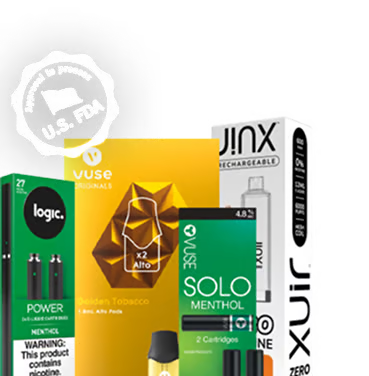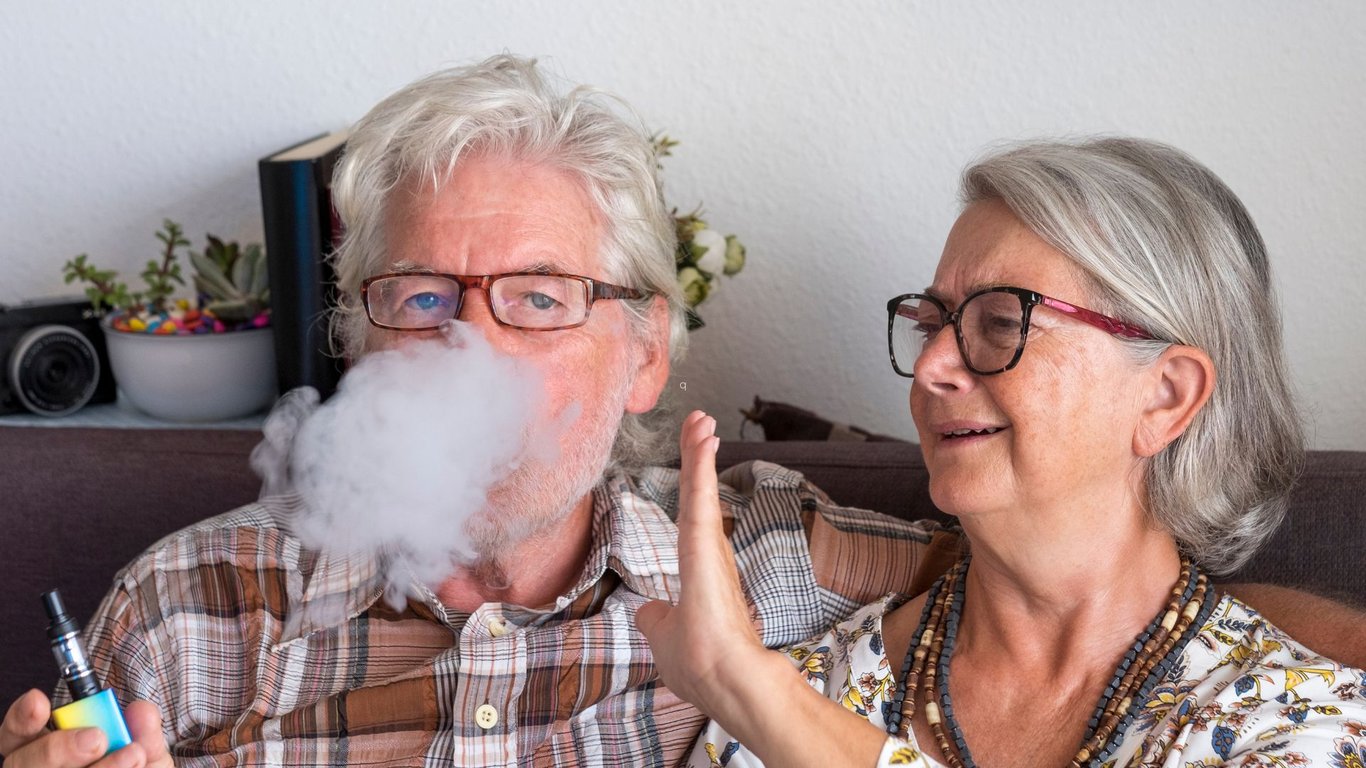Some people vape outside, others enjoy it inside. Lots of people who vape enjoy it socially with others. Then, there’s another consideration: being respectful of people in your home. You like vaping, but maybe your housemates’ or family’s health and vaping could be at odds. Your care for the people (and pets) sharing your space shows you want to do what’s best for them, while still enjoying your vape experience.
Maybe you’ve mostly puffed outside and are tempted to bring it indoors, or you’re new to vaping and curious about how it affects others. Either way, it’s smart to ask. The good news is that compared to cigarettes, vapor contains way fewer toxins. But should you wonder about secondhand vapor’s effects?
We’ll break down what’s in vapor, how it compares to tobacco smoke, and what it might mean for your housemates. Plus, you’ll get some practical tips to vape responsibly indoors.
What’s in Secondhand Vapor?
Secondhand vapor is the aerosol you exhale after vaping. It can stay in the air and land on surfaces after you exhale. According to the National Institute of Health (NIH, 2020), secondhand vapor can include nicotine, ultrafine particles, and other potentially harmful chemicals. These are present at lower levels than in cigarette smoke. While vapor is less toxin-intensive than tobacco smoke, it does still remain in the air, where others might inhale it. The fruit or candy flavoring smell can mask what’s in the vapor, which can be harmful for others to breathe.
Does It Affect Other People in the House?
So, does secondhand vapor impact those sharing your space? Yes, it can, though the effects are less severe than with secondhand tobacco smoke.
What about research on vape aerosol secondhand risks? The Environmental Protection Agency (EPA) says secondhand aerosols from vapes are created from exhaling, but need more study. Inhaling secondhand vapor can be irritating to the nose, throat and eyes. Everyone in the home, especially those who already have breathing problems, plus your pets, can be vulnerable to e-cig vapor.
Vaping also leaves behind particles and residues that people and pets can come in contact with, and which may cause reactions in sensitive people. We’ll discuss that in greater detail shortly.
The good news is that you can take steps to limit these effects, which we’ll outline next.
Comparison: Vaping vs. Smoking Indoors
Let’s compare vaping and smoking indoors. Smoking fills a room with tar, carbon monoxide, and a host of carcinogens that cling to surfaces and pose health risks. Vaping, on the other hand, produces an aerosol. The Centers for Disease Control and Prevention confirms that e-cig vapor contains fewer toxins than smoking. That said, this doesn’t mean vaping is safe. Secondhand vapor still carries nicotine and other compounds that can reduce indoor air quality. Vaping is a less toxic option than smoking, but it requires careful attention to minimize its impact on others.
Tips for Responsible Indoor Vaping
It’s great that you’re thinking of others while you vape indoors. If you do vape in the house, try these ideas to keep indoor air as clear as possible for your family and friends:
- Ventilate the space: Open a window or use a fan to disperse vapor and improve air flow. Good ventilation is an easy way to maintain a comfortable environment, showing consideration for everyone sharing the space while you vape indoors. While this is a good idea, it is not foolproof. Vaping in a room far from activity, such as a room that’s seldom used, with the window open, could provide some benefit, vs. vaping in a commonly used room with the window open.
- Use lower-powered devices: Lower-powered devices create less cloud, making your vaping less noticeable and intrusive. This choice helps maintain cleaner air in shared spaces.
- Consider your housemates: Avoid vaping near children, pregnant individuals, or those with breathing issues. These groups may be more sensitive to vapor or nicotine, so keeping your distance or choosing another room is a thoughtful move. It’s a judgment call, but if people in these categories live in the home, vaping indoors may not be a wise choice. Again, a room less commonly used could work if you choose to vape inside.
- Adjust your device: Devices with customizable airflow can help you reduce vapor output. By tweaking the settings, you can produce less vapor, making it less overwhelming in enclosed spaces.
- Select flavors carefully: Strong scents might bother others. Opting for milder options keeps the atmosphere pleasant for everyone. Choosing the right flavors will ensure that everyone can enjoy their time at home.
With these habits, you can enjoy vaping while keeping your home comfortable for everyone.
Ultimately, it’s your choice if you decide to vape inside the house. Vaping outside would help ensure that indoor air stays unaffected, and might be the right choice if people sensitive to the vapor may be exposed.
Please note: Vape residues and particles can get deposited on surfaces in your home. This is called thirdhand smoke. These aerosol particles can be harmful, containing nicotine and other toxins. Some thirdhand smoke can linger for up to two weeks, sticking to many objects, including clothing.
Think it through, and with the details we’ve shared, you can make the best decision for yourself on where to vape.
Vape Responsibly with Quality Products from I Love Ecigs
Want vaping options that are smoother and less intrusive? Check out I Love Ecigs for top-rated devices and flavors designed to deliver satisfaction while keeping the impact low. Buy vapes and accessories for use at home or on the go. Explore top-rated devices and flavors from trusted brands like Logic, Jinx, Juul, Blu, and Vuse on I Love Ecigs’ site. View our product line for a great vape selection!














